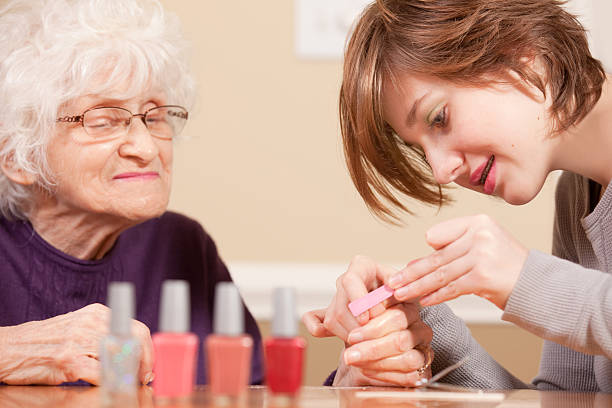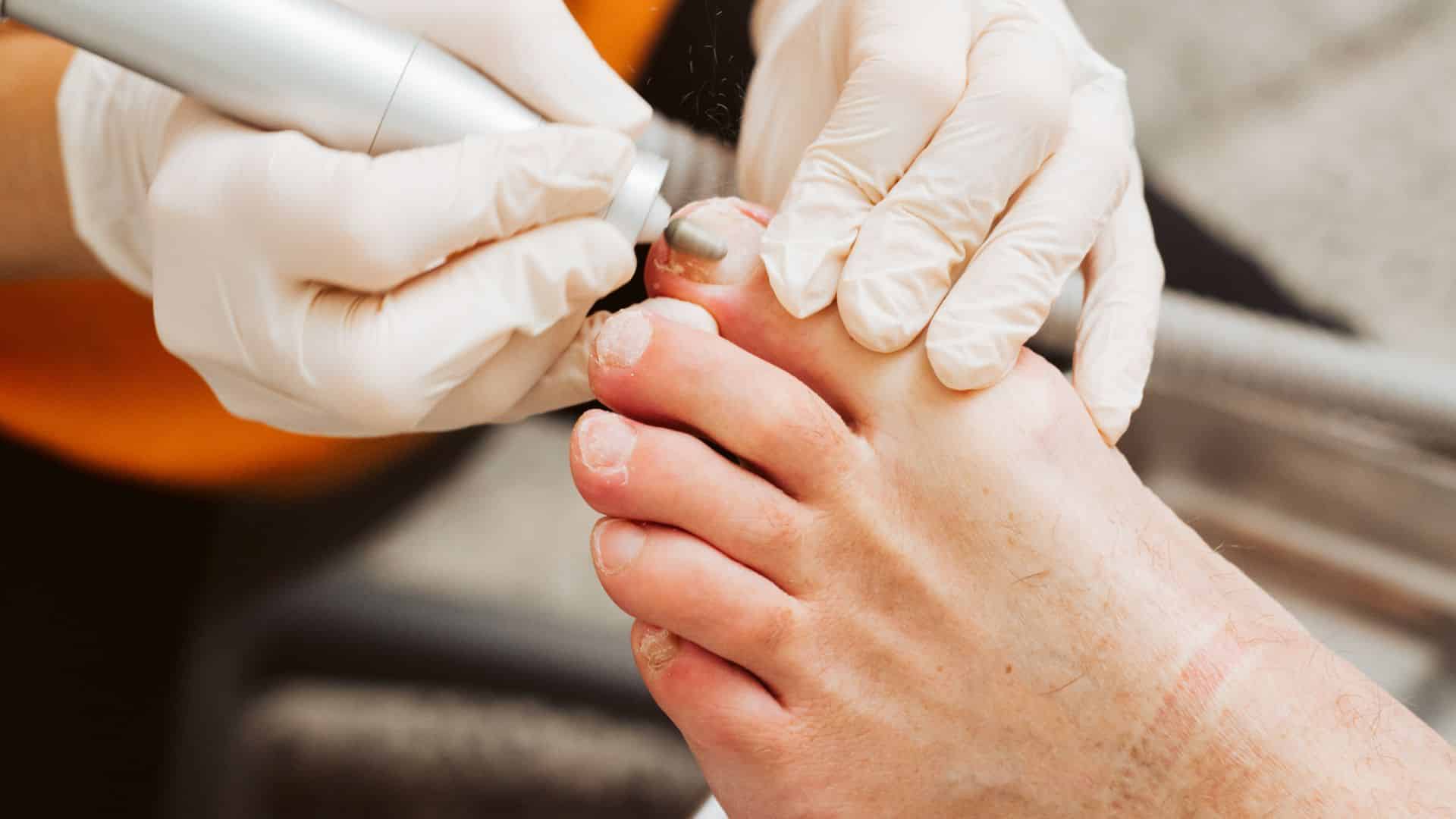News
ELDERLY NAIL CARE AT HOME
Elderly Nail Care at Home: A Guide to Safe and Effective Foot and Nail Care for Seniors
As we age, our bodies undergo many changes, and one often overlooked aspect of health in seniors is nail care. Proper foot and nail care is essential for maintaining mobility, comfort, and hygiene. In older adults, nails tend to become thicker, more brittle, and harder to manage, leading to an increased risk of ingrown nails, infections, and other foot-related issues. By learning how to perform Elderly Nail Care at Home, caregivers and family members can provide valuable support that enhances seniors’ quality of life, health, and independence.
In this guide, we’ll cover everything you need to know about Foot Care For Seniors, including tips, essential tools, and answers to common questions about elderly nail care.

Why Elderly Nail Care Matters
Nail care is more than a simple grooming task. It plays a critical role in a senior’s overall well-being. Overgrown or improperly trimmed nails can lead to pain, infection, and mobility issues. Because many older adults have conditions such as diabetes, arthritis, and circulation problems, their feet and nails require special care to prevent complications. For seniors who may struggle to perform nail care on their own, family members or caregivers can make a positive impact by offering safe, regular nail care at home.
Benefits of Elderly Nail Care at Home
Performing Elderly Nail Care at Home offers multiple benefits:
- Prevents Infections and Ingrown Nails: Regular trimming helps avoid infections, ingrown nails, and fungal issues that can develop due to overgrown or improperly cut nails.
- Improves Comfort and Mobility: Neatly trimmed nails reduce discomfort and make it easier for seniors to walk, reducing the risk of falls and promoting mobility.
- Maintains Overall Health: Foot and nail issues can contribute to other health problems, especially in those with compromised immune systems or conditions like diabetes. Good foot hygiene supports overall health and well-being.
- Builds Trust and Comfort: Routine care performed at home by a loved one can create a comforting environment and help seniors feel more relaxed and secure.

Essential Tips for Elderly Nail Care at Home
To ensure a safe and effective Elderly Nail Care at Home routine, follow these steps:
- Choose the Right Tools: Having the correct tools makes all the difference. For seniors, use nail clippers or scissors specifically designed for thick nails, along with an emery board or nail file to smooth edges. Investing in a foot bath or a basin for soaking can also be beneficial.
- Soak the Feet First: Before trimming, it’s best to soak the feet for about 10–15 minutes in warm water. This softens the nails, making them easier to cut and reduces the risk of cracking or injury. Adding a small amount of mild soap can help keep the feet clean and reduce the risk of infections.
- Trim Carefully and Slowly: Take care to cut the nails straight across rather than rounding the edges. This technique minimizes the risk of ingrown nails, which can be painful and lead to infections. Trim small sections at a time to avoid accidentally cutting too close to the skin.
- File Rough Edges: After trimming, use an emery board to file down any rough or sharp edges, which helps prevent snags and accidental injuries.
- Moisturize the Feet and Nails: Elderly skin tends to be drier, so apply a moisturizer after trimming. A non-greasy lotion or foot cream can be especially beneficial in keeping the skin soft and healthy. However, avoid putting lotion between the toes, as it can create a moist environment ideal for fungal growth.
- Check for Abnormalities: Look for signs of infection, such as redness, swelling, or discoloration of the nails. If you notice any unusual changes, seek advice from a healthcare professional.
- Maintain a Routine: Regular care is crucial for Foot Care For Seniors. Aim to perform nail trimming and foot care at least once every month, or as needed based on the senior’s specific needs and nail growth rate.

Foot Care for Seniors: How to Address Common Issues
As we age, foot care becomes increasingly important, particularly in those who suffer from chronic conditions such as diabetes or arthritis. Here are common foot issues in seniors and tips to address them:
- Thickened Nails: Many seniors experience thickened toenails, which can be challenging to trim. Soaking the feet before nail care and using heavy-duty clippers can help.
- Dry Skin and Calluses: To prevent cracks and calluses, regularly moisturize the feet and avoid walking barefoot.
- Foot Pain or Sensitivity: If seniors experience foot pain, consider consulting a podiatrist to address any underlying issues that may require professional care.
Common Questions about Elderly Nail Care at Home
1. How can I safely cut my elderly loved one’s thick toenails at home?
Cutting thick toenails can be challenging, but it can be done safely with the right approach. Here’s how:
- Soak the Feet: Start by soaking the feet in warm water for 10–15 minutes to soften the nails, making them easier to cut. Adding Epsom salts can also help alleviate foot pain and inflammation.
- Use the Right Tools: For thick toenails, use nail clippers designed for thicker nails or even small scissors with strong blades. Avoid using regular nail clippers, as they may not be strong enough for thick nails.
- Trim in Small Sections: Avoid trying to cut the nail all at once, which can lead to cracking. Instead, trim small sections straight across, then smooth out the edges with an emery board or nail file.
If the nails are extremely thick, it may be necessary to seek help from a podiatrist, who has specialized tools and techniques for safely trimming very thick nails.
2. What signs should I look for that indicate a senior may need professional foot care?
While Elderly Nail Care at Home is often sufficient, there are certain signs that indicate it’s time to seek professional help:
- Persistent Swelling or Redness: If the feet appear swollen or red, it could be a sign of infection or poor circulation. Conditions like cellulitis require immediate medical attention.
- Discolored or Brittle Nails: Yellow, thick, or brittle nails may indicate a fungal infection. Fungal infections can spread and worsen if left untreated, so professional care is advised.
- Sores or Ulcers That Don’t Heal: Seniors with diabetes or circulation issues are at risk for non-healing sores. These wounds require professional medical treatment to prevent complications.
- Changes in Foot Shape or Structure: Bunions, hammertoes, or other structural changes can cause pain and require intervention from a podiatrist or orthopedic specialist.

Tools for Elderly Nail Care at Home
To perform Foot Care For Seniors safely and effectively, it’s essential to have the right tools. Here are some recommended items:
- Nail Clippers for Thick Nails: Invest in high-quality clippers specifically designed for thick or brittle nails.
- Emery Board or Nail File: Smooth out sharp edges after trimming to prevent accidental injuries.
- Foot Basin for Soaking: A foot bath or basin makes it easy to soak the feet in warm water before trimming.
- Moisturizing Lotion: Choose a non-greasy moisturizer to keep the feet hydrated and prevent dryness.
Additional Tips for Safe Foot Care for Seniors
- Ensure Good Lighting: Poor lighting can increase the risk of injury during nail care. Perform nail care in a well-lit room or use a small lamp to ensure clear visibility.
- Wear Gloves if Needed: For caregivers, wearing gloves can improve grip on clippers and provide a more sanitary experience.
- Communicate with the Senior: Nail care can be uncomfortable for some, so make sure to check in regularly with your loved one to ensure they’re comfortable throughout the process.
- Take Breaks if Needed: If the senior has difficulty sitting for long periods, break the nail care process into steps, allowing them to rest in between.

Conclusion: Creating a Routine of Elderly Nail Care at Home
Performing Elderly Nail Care at Home isn’t just about keeping nails trimmed; it’s about maintaining comfort, health, and dignity for seniors. When family members and caregivers are equipped with the right tools and techniques, they can offer an invaluable service that contributes to a senior’s overall well-being. Consistent Foot Care For Seniors can make a significant difference, ensuring they remain active, pain-free, and able to maintain their independence.
Whether you’re providing care for a loved one or assisting a senior as a professional caregiver, understanding the basics of elderly nail care is essential. With attention to detail, patience, and the right approach, you can help prevent issues and keep your loved one’s feet and nails healthy, happy, and well-cared for.


Bài viết liên quan: